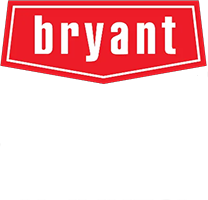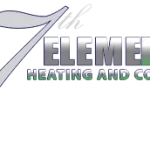Alright folks, let’s talk about something near and dear to every Caldwell homeowner’s heart (and wallet): our HVAC systems. As someone who’s been wrangling heating and cooling systems in the Treasure Valley for a good while, I can tell you, understanding your system *before* it decides to take an unexpected vacation is key. Caldwell’s climate keeps our HVAC systems on their toes – blistering summers demand reliable AC, and those chilly winters mean our furnaces better be ready to work overtime. Having a system that’s up to the challenge isn’t just about comfort, it’s practically a necessity around here.
Understanding Your HVAC System
Think of your home’s HVAC (Heating, Ventilation, and Air Conditioning) system as the unsung hero of year-round comfort. It’s a complex network, but the main players are usually a furnace or boiler for heat, an air conditioner or heat pump for cooling, ductwork to move the air, and the thermostat acting as the brains of the operation. Each part has a distinct job, but they all need to work together seamlessly.
Your furnace (often fueled by natural gas or electricity) creates warmth, while the air conditioner pulls heat and humidity out of the air during those scorching Caldwell summers. A heat pump is a versatile player, capable of both heating and cooling by moving heat around. The ductwork is the highway system for conditioned air, carrying it to every room, and the thermostat tells everything when to turn on and off to maintain your desired temperature. Other unsung heroes include filters, humidifiers, and dehumidifiers that keep the air clean and balanced.
Each component relies on the others. The furnace generates heat, the blower motor pushes it through the ducts, and the thermostat ensures it only runs when needed. The AC unit cools refrigerant, which absorbs indoor heat via the evaporator coil, and the condenser unit releases that heat outside. It’s a coordinated effort, all aimed at keeping your home feeling ‘just right’.
Now, here’s something crucial many folks overlook: proper sizing and installation. An oversized or undersized unit, or poorly installed ductwork, won’t just make your home uncomfortable; it’ll waste energy, struggle to maintain temperatures, and likely lead to premature breakdowns. Getting the system sized correctly for *your* specific home and Caldwell’s climate demands is step one for efficient, long-lasting comfort.
Warning Signs You Need HVAC Repair
Your HVAC system usually gives you hints before it completely calls it quits. Paying attention to these warning signs can save you from a sweltering summer afternoon or a frigid winter night without heating or cooling – not to mention potentially bigger repair bills down the line. It’s like your car making a funny noise; ignoring it rarely makes it go away.
- Unusual Sounds and Odors: Is your unit suddenly rattling, banging, squealing, or grinding? Those aren’t happy noises. Rattling might mean loose parts, while grinding or squealing could point to motor or belt issues. Likewise, odd smells are red flags. Musty odors often signal mold growth in the system or ducts, while burning smells could indicate electrical problems or overheating components. Don’t ignore these sensory clues!
- Inconsistent Heating or Cooling: Are some rooms freezing while others feel like a sauna? This inconsistency often points to problems like leaky or blocked ductwork, a failing compressor, or even an improperly sized system. Your HVAC should provide even comfort throughout your home.
- Spiking Energy Bills: Has your energy bill shot up recently without a corresponding change in your usage habits? This is often one of the first signs that your HVAC system is working harder than it should, possibly due to dirty coils, duct leaks, or simply aging components losing efficiency.
- Frequent Cycling: Does your system turn on and off constantly, running only for short bursts? This “short cycling” isn’t normal. It could be caused by various issues, from a malfunctioning thermostat to an oversized unit or clogged filter, and it puts unnecessary strain on the components.
- Other Red Flags: Keep an eye out for weak airflow from vents, visible moisture or leaks around the indoor or outdoor units (which could indicate a refrigerant leak or a blocked drain line), excessive dust, pilot light issues (for gas furnaces), or increased humidity indoors. Any of these warrant a closer look.
If you notice any of these signs, it’s best to call in a professional. Trying to tough it out usually just leads to more significant problems.
What to Expect During an HVAC Repair Service
Okay, so you’ve spotted a warning sign and called for help. What actually happens when the technician arrives? Knowing the process can ease any anxiety and help you understand what you’re paying for. Expect a professional demeanor – they should arrive in a marked vehicle, likely wearing a uniform, and be able to provide identification.
The first step is always diagnostics. The technician will likely ask you about the problems you’ve been experiencing. Then, they’ll perform a thorough inspection, checking both the indoor and outdoor units. This involves listening for unusual noises, visually inspecting components, checking electrical connections and wiring for safety and wear, testing thermostat calibration and operation, and assessing overall system performance. They’ll look for leaks, check refrigerant levels (if applicable), examine belts, motors, coils, drain lines, and safety controls. Think of it as a doctor giving your system a full check-up.
Common repair tasks vary widely depending on the diagnosis. It could be something relatively simple like replacing a dirty air filter (though hopefully, you’re doing that regularly!), topping off refrigerant (and finding/fixing the leak!), recalibrating the thermostat, or cleaning dirty coils. More involved repairs might include replacing a faulty capacitor, contactor, fan motor, or fixing electrical issues. Sometimes, ductwork repairs are needed to seal leaks.
Estimating timelines and costs upfront can be tricky before the diagnostic is complete. Simple repairs might take an hour or two, while more complex jobs could take longer. Cost factors include the specific part needed (some components are much more expensive than others), the complexity of the repair, and labor time. A trustworthy technician will explain the findings, discuss the necessary repairs, and provide an estimate before starting work.
Crucially, always ensure you’re hiring licensed, bonded, and insured technicians. This protects you and ensures they have the proper training and accountability. Verifying credentials is never a bad idea. Experience in the local area, like Caldwell, also means they understand our specific climate needs and building codes.
Speaking of codes, HVAC work often requires permits, especially for replacements or significant alterations. While HVAC permitting in Canyon County is primarily handled by the State of Idaho as of late 2023, specific installations like woodstoves might still require county permits. A reputable contractor will handle the necessary permits as part of their service, ensuring the work complies with local regulations like those outlined in the International Building Code, Mechanical Code, and Energy Conservation Code adopted by the area. Don’t hesitate to ask about permits – it’s part of ensuring the job is done right and safely.
Proactive Maintenance to Extend System Life
Let’s be honest, nobody *wants* to deal with unexpected HVAC repairs, especially when it hits the wallet hard. The good news? A little proactive care goes a long, long way in keeping your system humming happily and minimizing those surprise breakdowns. Think of it as an investment, not an expense.
There are definitely simple things you can do yourself. Regularly changing your air filters is probably the single most impactful DIY task. A clogged filter restricts airflow, makes your system work harder, worsens air quality, and can lead to bigger problems. Aim for every 1-3 months, maybe more often if you have pets or allergies. Also, keep the area around your outdoor unit clear of debris like leaves, grass clippings, and encroaching shrubs – it needs room to breathe! Gently hosing it down occasionally helps too. Checking your condensate drain line periodically to ensure it’s not clogged is another good practice. A little vinegar/water mix can help keep it clear.
While DIY tasks help, nothing beats professional annual (or better yet, bi-annual) tune-ups. Technicians catch small issues before they become major failures. During a tune-up, they’ll clean critical components like coils, check electrical connections, lubricate moving parts, test safety controls_DEPRECATED, verify refrigerant levels, and ensure the whole system is operating efficiently and safely. This improves efficiency (lower energy bills!), extends the system’s lifespan, enhances comfort, improves air quality, and often keeps manufacturer warranties valid.
Leveraging your thermostat effectively also helps. If you have a programmable or smart thermostat, use it! Setting schedules or adjusting temperatures when you’re away or asleep reduces unnecessary runtime and wear. Don’t drastically crank the temperature up or down; gradual adjustments are more efficient.
Maintaining proper indoor humidity also contributes to comfort and system health. Excessive dryness or dampness can be addressed with whole-house humidifiers or dehumidifiers, which integrate with your HVAC system. Similarly, HVAC zoning systems, which allow different temperature settings for different areas of your home, can improve comfort and reduce strain on the main unit by only conditioning the areas needed.
Many HVAC companies offer maintenance plans. These typically include scheduled tune-ups and sometimes offer discounts on repairs or priority service. Over the long term, these plans can be a smart investment, potentially saving you significant money compared to paying for emergency repairs and dealing with the hassle of unexpected breakdowns.
Taking these proactive steps doesn’t guarantee you’ll *never* need a repair, but it dramatically shifts the odds in your favor, keeping your Caldwell home comfortable and your HVAC system running efficiently for years to come.
What are your go-to HVAC maintenance tips? Or maybe you have a repair story to share? Drop a comment below – let’s help each other keep our homes comfortable year-round!

